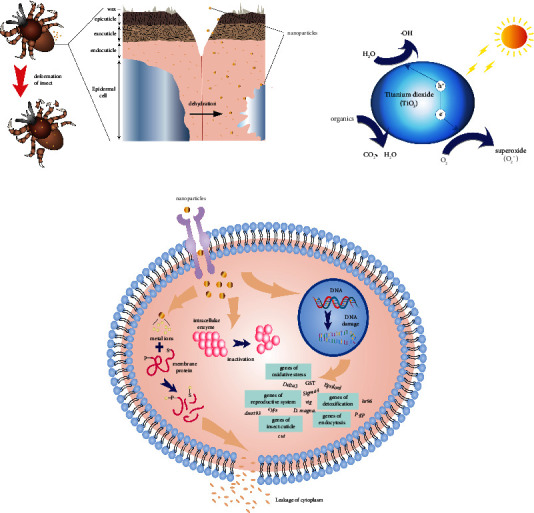Figure 4.

Mode of action of NPs against vector insects. (a) The NPs bind to the body surface of vectors, leading to the physical absorption of lipids and waxes, causing cell dehydration and deformation of the larvae. (b) Photocatalytic mechanism of titanium dioxide, generating peroxides such as reactive oxygen species causing oxidative stress in vectors. (c) Several ways in which NPs can cause the death of vectors by affecting cells: (1) metal NPs release metal ions that reduce the permeability of cell membranes and cause cytoplasmic leakage; (2) NPs reduce enzyme activity; and (3) NPs cause DNA damage and also affect the related gene expression.
